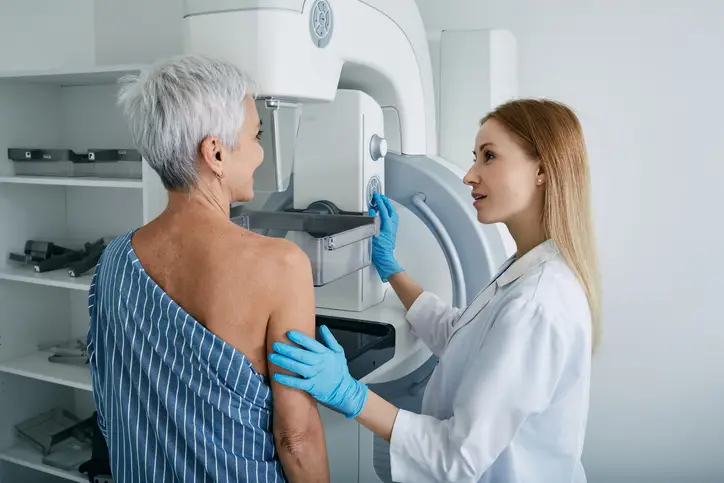Facing a breast cancer scare or diagnosis can be incredibly overwhelming, plunging you into a world filled with medical terms and decisions you never thought you’d have to understand. Among these, choosing the right imaging techniques for breast cancer detection and diagnosis is crucial. The medical community relies on a suite of tools, including mammograms, breast ultrasounds, and breast MRIs, to identify abnormalities, evaluate risks, and shape treatment strategies. These methods, each with its unique approach like 2D and 3D mammograms (tomosynthesis), play different roles in screening and diagnostic processes. This guide aims to simplify these complexities, offering clarity and support as you navigate through this challenging time, ensuring you feel more informed and less daunted by the choices ahead.
Mammograms: 2D and 3D (Tomosynthesis)
A 2D mammogram is the traditional X-ray imaging technique of the breast and has been the gold standard for breast cancer screening for decades. It works by taking two flat images of each breast. While highly effective as an imaging technique in detecting breast cancer early, it has limitations, especially in women with dense breast tissue, where the overlapping layers can obscure or mimic cancerous growths.
Tomosynthesis, or 3D mammography, is a more recent innovation that takes multiple X-ray pictures of each breast from different angles, creating a layered, three-dimensional image. This method allows doctors to see through layers of tissue and examine areas of concern more clearly, reducing the need for follow-up testing and false positives. It’s particularly beneficial for individuals with dense breast tissue.
Screening mammograms are routine for those without symptoms as part of regular health check-ups to catch cancer early. Diagnostic mammograms are performed if you or your doctor find breast changes or if a screening mammogram detects an irregularity. They are more detailed and focus on a specific area of the breast.
Breast ultrasound
Breast ultrasound uses sound waves to produce images of the structures inside the breast. Unlike mammography, which uses X-rays, ultrasound provides a different type of image that can distinguish between fluid-filled cysts and solid masses.
Ultrasounds are often used alongside mammograms, especially in women with dense breast tissue, to evaluate abnormal findings from a mammogram or physical exam.
They are also often used if a biopsy is needed, as they help the doctor perform needle biopsies by providing real-time images.
Breast MRI
A breast MRI is an imaging technique that uses magnetic fields to create detailed pictures of the inside of the breasts to screen for cancer. It’s a more sensitive imaging test that can pick up more abnormalities than mammograms or ultrasounds but also has a higher rate of false positives.
For those with a strong family history of breast cancer or a genetic predisposition, MRIs can be used in addition to mammograms for comprehensive screening.
They are also often used to further evaluate abnormalities detected by a mammogram or ultrasound and to assess the extent of cancer after diagnosis.
Understanding the differences between these screening and diagnostic tools and their specific applications can help you navigate your breast health care more confidently. It’s essential to have open conversations with your healthcare provider about which tests are right for you, based on your individual risk factors and health history. Armed with knowledge, you can take proactive steps in your breast cancer imaging strategy.
——————————————————————
Facing a breast cancer diagnosis can feel overwhelming, especially when trying to understand the maze of breast imaging options and what they mean for your treatment. Outcomes4Me is your partner in demystifying breast cancer care, providing you with the latest, evidence-based information right at your fingertips. Download the Outcomes4Me app today and take a proactive step towards managing your breast health with knowledge and support.



